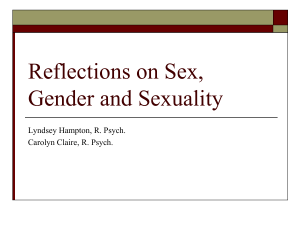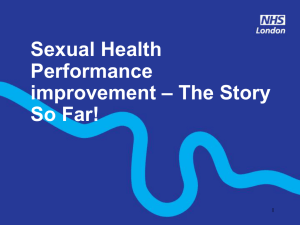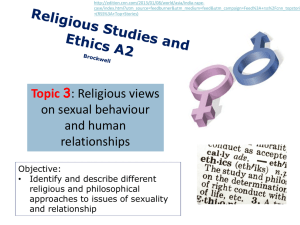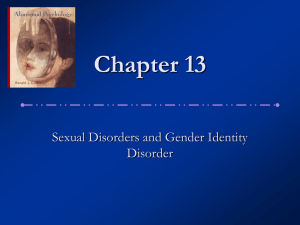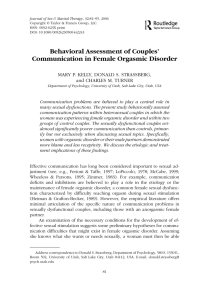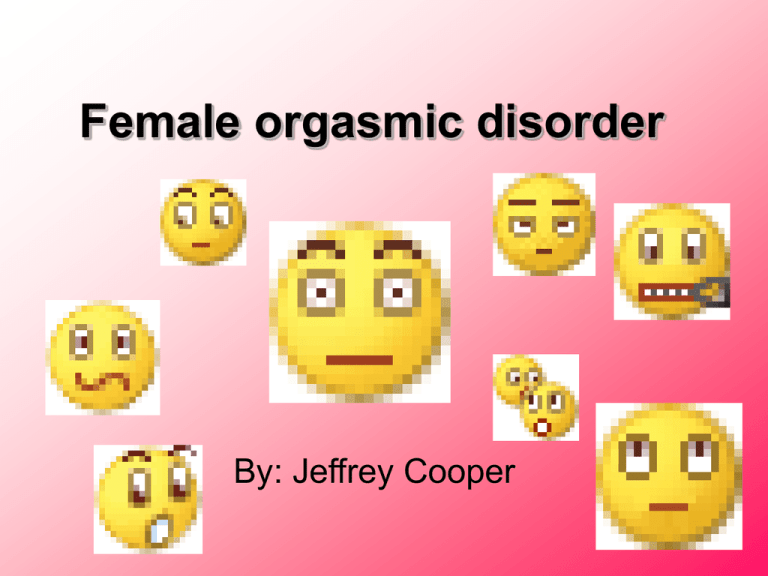
Female orgasmic disorder
By: Jeffrey Cooper
What is female orgasmic disorder?
Basically, female orgasmic disorder (or FOD) is an inability to orgasm,
or reach sexual stimulation.
According to the DSM-IV, “Female Orgasmic Disorder is a persistent or
recurrent delay in, or absence of, orgasm following a normal sexual
excitement phase.”
Symptoms
• Woman may be sexually aroused but never reach orgasm.
• Orgasmic capacity is less than would be reasonable for her age,
sexual experience, and/or the adequacy of sexual stimulation she
receives.
• Most prevalent in younger women.
• Mostly Lifelong disorder, not acquired.
• Can lead to other disorders such as depression, anxiety, and
debilitating feelings of inadequacy.
Aetiology
Learning perspective• A conditioned stimulus (the act of sex) has
been conditioned to be a negative thing.
For example: rape, unsatisfying sexual
experiences.
• Orgasmic capacity is learned through
conditioning and experience, this
conditioning has not been created.
Biological perspective• Medications- blood pressure medications,
antidepressants know as selective
serotonin reuptake inhibitors, anti-anxiety
medications and sedatives
• Alcohol
• Surgery (childbirth)
• Pelvic floor prolapse
• Hormonal dysfunctions
Cognitive perspective
• I think therefore I am
• The physiological arousal is inhibited by
the emotion.
• Cognitive appraisal theory- emotional state
is based on our assessment of the
situation and its significance to well-being
Treatment
Learning Perspective
• Continue sexual activity through
intercourse or masturbation in an attempt
to create a CR.
• Use modelling to show sexual stimulation
as the correct response.
Biological perspective
• Hormone replacement therapy
• If it is related to compromised blood flow or
nerve damage: blood flow enhancing
agents/devices like Viagra or the EROS-CTD,
hormonal creams, etc.
• Switching medications
• Kegel exercises to tone pelvic muscles. This
involves a routinary start and stop the stream of
urine to strengthen the contractionary pelvic
muscles.
Cognitive perspective
• Cognitive therapy to understand why the
sexual experience is not attributed to an
orgasmic climax.
• Introspection/self-help
Bibliography
• Sex Health at Oprah.com
http://www.oprah.com/presents/2004/kyb/sex/kyb_sex_orgasm.jhtml
• Network for excellence in Women’s sexual health (NEWSHE)
http://newshe.com/factsheets/Orgasmic_Disorder.shtml
• AllPsych Online
http://allpsych.com/disorders/sexual/orgasmfemale.html
• PsychNet-UK
http://www.psychnet-uk.com/dsm_iv/female_orgasmic_disorder.htm
• HealthAtoZ
http://www.healthatoz.com/healthatoz/Atoz/ency/sexual_dysfunction.
jsp
• Diagnostic and Statistical Manual, Version IV, Axis 1, Orgasmic
Disorders. P505-507






